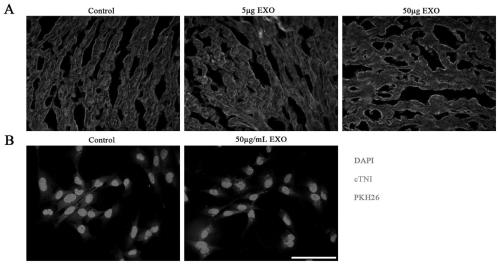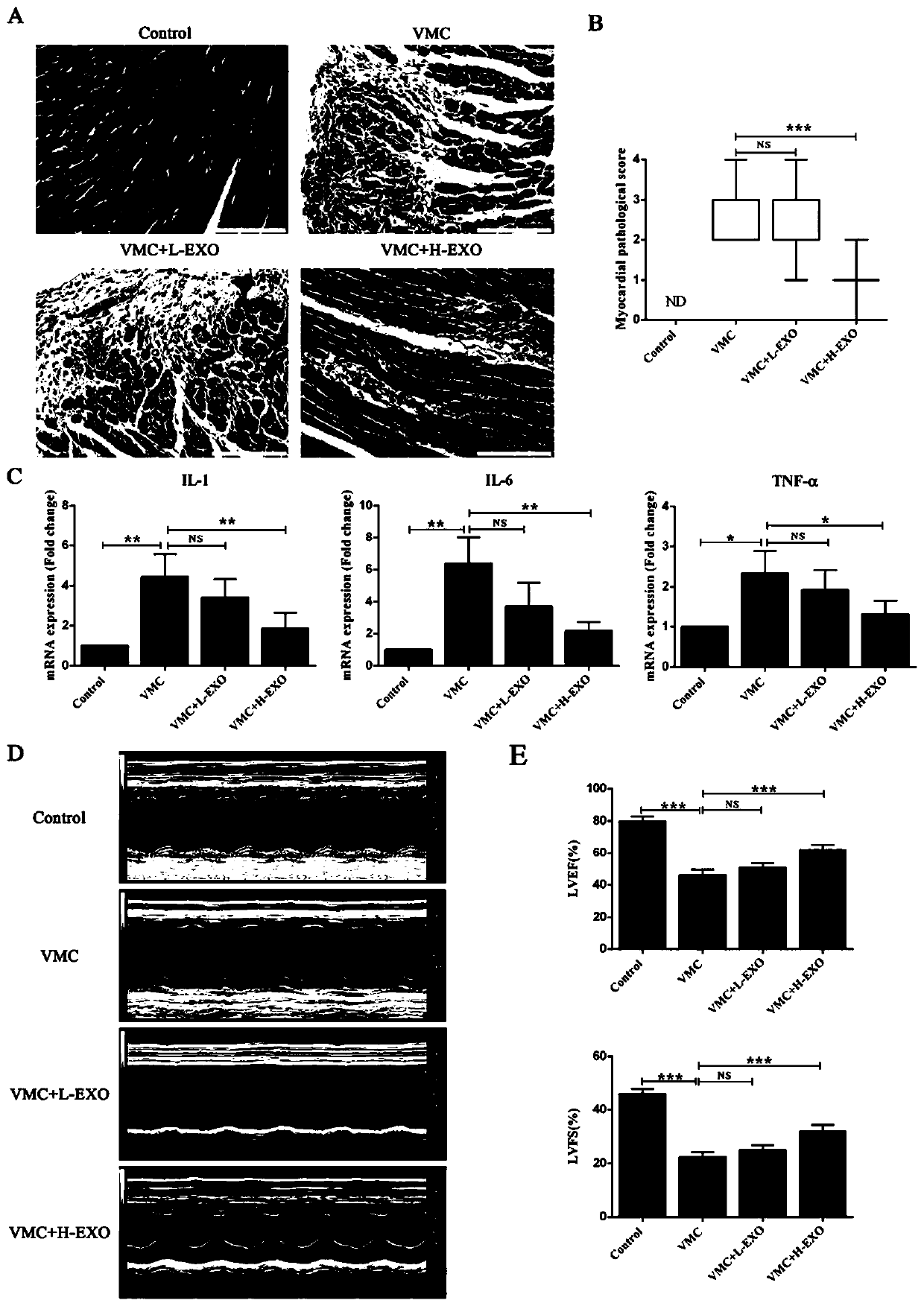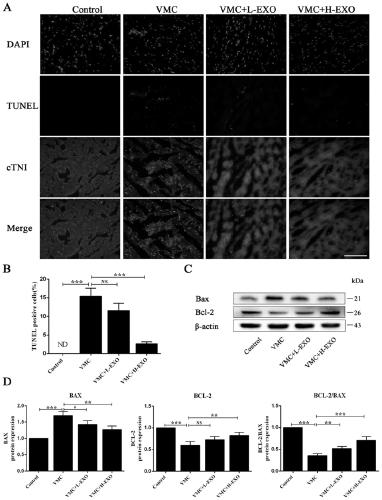Exosome derived from human umbilical cord mesenchymal stem cells, and identification method and application of exosome
A technology of stem cells and identification methods, applied in the field of human umbilical cord mesenchymal stem cell-derived exosomes, identification and application, can solve the problems of tumorigenic risk, ethical issues, immune rejection, etc., to improve the disease, improve the heart function, the effect of inhibiting apoptosis
- Summary
- Abstract
- Description
- Claims
- Application Information
AI Technical Summary
Problems solved by technology
Method used
Image
Examples
Embodiment 1
[0024] Example 1: Obtaining of human umbilical cord mesenchymal stem cell exosomes (hucMSC-exosomes)
[0025] Step 1: Isolation and culture of human umbilical cord mesenchymal stem cells (hucMSCs):
[0026] Human umbilical cord mesenchymal stem cells (hucMSCs) were obtained by collagenase digestion. Briefly, under aseptic conditions, the umbilical cord tissue was dissected and the umbilical arteries and veins were removed. The umbilical cord tissue was washed twice with PBS containing 1% gentamicin to remove blood clots and red blood cells, and cut into 1mm 3 size organization block. Then digest with 0.1% type II collagenase on a shaker at 37°C for 6 hours, filter with a 100-mesh screen, centrifuge the filtrate at 1000 rpm for 10 minutes, resuspend the pellet in PBS and wash twice. Use DMEM / F12 + 10% FBS (fetal bovine serum) + 1% P / S (penicillin / streptomycin) complete medium to gently blow the cell pellet, mix well, and transfer to 25cm 2 in a petri dish at 37°C, 5% CO 2 ...
Embodiment 2
[0029] Example 2: Identification of human umbilical cord mesenchymal stem cell exosomes (hucMSC-exosomes)
[0030] Human umbilical cord mesenchymal stem cells (hucMSCs) obtained in Step 1 of Example 1 were identified by flow cytometry: the third generation hucMSCs (P3) were digested with trypsin containing 0.25% EDTA, and centrifuged at 1500 rpm for 5 minutes to collect hucMSCs. Wash once with PBS, then fix with 500 microliters of 4% paraformaldehyde overnight at 4°C, discard the fixative, resuspend with 2 milliliters of PBS, and centrifuge to discard the supernatant. Block with 2 ml of PBS containing 5% FBS for 10 minutes at room temperature, centrifuge to discard the supernatant, and set an isotype control group at the same time. Add FITC or PE-labeled fluorescent antibodies FITC-CD29, FITC-CD44, FITC-CD59, FITC-CD90, PE-CD105, PE-CD166, and FITC-CD34 working solution 100 μl at a ratio of 1:50 (5 μl antibody / 100 microliters of cell suspension), incubate at room temperature i...
Embodiment 3
[0032] Example 3: Verification of the effect of human umbilical cord mesenchymal stem cells (hucMSCs) in the treatment of viral myocarditis (VMC)
[0033] Virus
[0034] Coxsackie B3 virus (CVB3, Nancy strain, USA) was maintained and amplified using Hep2 cells. Virus titers were determined by the 50% tissue culture infectious dose (TCID50) method.
PUM
| Property | Measurement | Unit |
|---|---|---|
| diameter | aaaaa | aaaaa |
Abstract
Description
Claims
Application Information
 Login to View More
Login to View More - R&D
- Intellectual Property
- Life Sciences
- Materials
- Tech Scout
- Unparalleled Data Quality
- Higher Quality Content
- 60% Fewer Hallucinations
Browse by: Latest US Patents, China's latest patents, Technical Efficacy Thesaurus, Application Domain, Technology Topic, Popular Technical Reports.
© 2025 PatSnap. All rights reserved.Legal|Privacy policy|Modern Slavery Act Transparency Statement|Sitemap|About US| Contact US: help@patsnap.com



